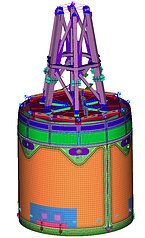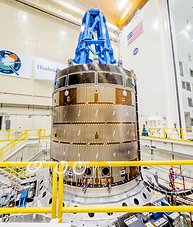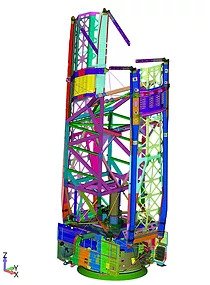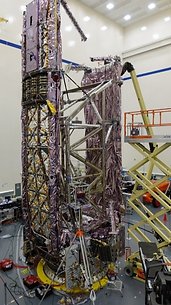Spacecraft Systems Development: Revolutionising Space Exploration through Space Systems Engineering
 0
0
Posted: Wed November 06 2:36 AM PST
Business: My Business Name


Spacecraft systems development represents one of the most intricate and vital components of modern space exploration. With the increasing reliance on space for everything from communication and navigation to scientific discovery and defense, the design, construction, and testing of spacecraft systems have become a critical focal point in aerospace engineering. A central discipline in this field is space systems engineering, which integrates multiple complex systems to ensure that spacecraft perform optimally under harsh conditions.
This article will delve into the importance of spacecraft systems development, explore the role of space systems engineering, and highlight how advancements in these areas contribute to the success of space missions.
The Essence of Spacecraft Systems Development
Spacecraft systems development involves the full lifecycle of spacecraft creation, from initial concept through design, testing, and finally, launch and mission support. The systems within a spacecraft, such as propulsion, power, communications, and thermal systems, must work in perfect harmony to achieve mission success. Given the extreme environments in space, spacecraft systems must be robust and reliable. Even small failures can result in mission failure, making the systems engineering behind spacecraft development all the more critical.
The spacecraft systems development process involves extensive planning, simulations, and testing to ensure that all systems meet mission requirements. This includes defining the performance parameters of the spacecraft, optimizing designs for space conditions, conducting detailed analyses, and finalizing production and testing procedures. Additionally, system integration ensures that individual subsystems work together as a cohesive unit, which is essential for spacecraft reliability.
The Role of Space Systems Engineering
Space systems engineering plays a pivotal role in spacecraft systems development by ensuring that all the components of a spacecraft operate cohesively and efficiently. Space systems engineering is an interdisciplinary field that requires knowledge of mechanical, electrical, thermal, and software systems to design and integrate the many different components of a spacecraft. From the launch vehicle to the spacecraft’s propulsion and communication subsystems, the role of space systems engineering is to ensure that every component of the system works together seamlessly.
Key Responsibilities in Space Systems Engineering
-
System Design and Architecture: The space systems engineer is responsible for designing the spacecraft’s architecture. This includes defining subsystems, their interactions, and ensuring that the spacecraft can survive and perform in space environments, such as the vacuum, extreme temperatures, and radiation.
-
Requirements Analysis: One of the first tasks in spacecraft systems development is to analyze mission requirements, both functional and non-functional. Space systems engineers ensure that the spacecraft meets specific mission goals while staying within budget and time constraints.
-
Risk Management: Spacecraft systems engineers are also responsible for identifying and managing risks throughout the development process. This includes anticipating challenges that could arise during the spacecraft’s journey, such as failure of components, and developing mitigation strategies.
-
Integration and Testing: Space systems engineering ensures that the various subsystems of the spacecraft are properly integrated. Engineers conduct tests to ensure that all components work together and perform as expected, even in the harsh space environment.
-
Optimization: Optimizing spacecraft systems for efficiency and performance is a crucial aspect of space systems engineering. Engineers must strike a balance between performance, weight, and cost to ensure that the spacecraft is capable of fulfilling its mission while staying within the project’s constraints.
The Impact of Space Systems Engineering on Spacecraft Development
Space systems engineering is a critical factor that influences every phase of spacecraft development. From the very first trade studies and design concept phase to final testing, launch, and even on-orbit operations, space systems engineers ensure that the spacecraft can successfully meet its mission objectives.
In fact, the application of space systems engineering is essential for designing spacecraft that can withstand the challenges posed by deep space exploration. The components of spacecraft must be carefully designed to endure the harsh conditions of space. For example, spacecraft must be engineered to deal with the extremes of temperature, radiation exposure, and micrometeoroid impacts, all while maintaining internal functionality.
One notable example of the importance of space systems engineering is the James Webb Space Telescope (JWST). The development of this groundbreaking telescope involved years of meticulous systems engineering to ensure that the telescope’s multiple systems (such as thermal systems, propulsion, and communication) functioned optimally together. Through systems engineering, the JWST was able to meet its complex performance requirements despite the immense challenges it faced.
Key Spacecraft Subsystems and Their Importance
A successful spacecraft system requires the integration of various subsystems, each of which plays a unique and essential role. Spacecraft systems engineering ensures that each subsystem is not only optimized for performance but also integrates seamlessly with other systems to ensure overall spacecraft functionality. Here are some of the key subsystems that are crucial to spacecraft success:
-
Propulsion Systems: Propulsion is one of the most critical subsystems of any spacecraft. Without effective propulsion, a spacecraft cannot reach orbit, maneuver, or complete its mission objectives. Propulsion systems are carefully designed and tested for optimal efficiency, power, and reliability.
-
Thermal Control Systems: Spacecraft are exposed to extreme temperature variations between the sun-facing and shadowed sides. Thermal control systems ensure that the spacecraft remains within the optimal temperature range, preventing damage to sensitive electronics and other critical systems.
-
Power Systems: Spacecraft rely on power systems (such as solar panels or onboard batteries) to maintain functionality. Space systems engineers must ensure that these systems are designed for longevity and reliability, capable of supporting the spacecraft’s operations over long periods in space.
-
Communication Systems: Effective communication systems are necessary to maintain contact with Earth and relay mission data. These systems must be designed to ensure reliable long-distance communication in a challenging environment.
-
Structural Systems: The spacecraft’s structural design ensures that it can withstand the mechanical stresses of launch and space operations. This includes analyzing materials and ensuring that the structure can handle vibrations, thermal expansions, and other environmental stresses.
Conclusion
Spacecraft systems development is a complex and multi-disciplinary field that requires expertise in various areas of engineering. Space systems engineering is integral to ensuring that spacecraft function efficiently, survive harsh space conditions, and meet mission goals. Through the careful integration of subsystems, rigorous testing, and optimization, spacecraft can achieve their intended mission objectives, from communications and science to deep space exploration.
The continuous advancement in spacecraft systems development and space systems engineering paves the way for future innovations in space exploration. With the support of specialized engineers and cutting-edge technology, the next generation of spacecraft will help push the boundaries of human knowledge and capabilities in space.
Comments
Please login above to comment.


